Trumps "Peace Proposal" Is Not Diplomacy | It Is Domination Draped In The Language Of Peace | A Blueprint That Deepens Occupation + Apartheid While Masquerading As Resolution
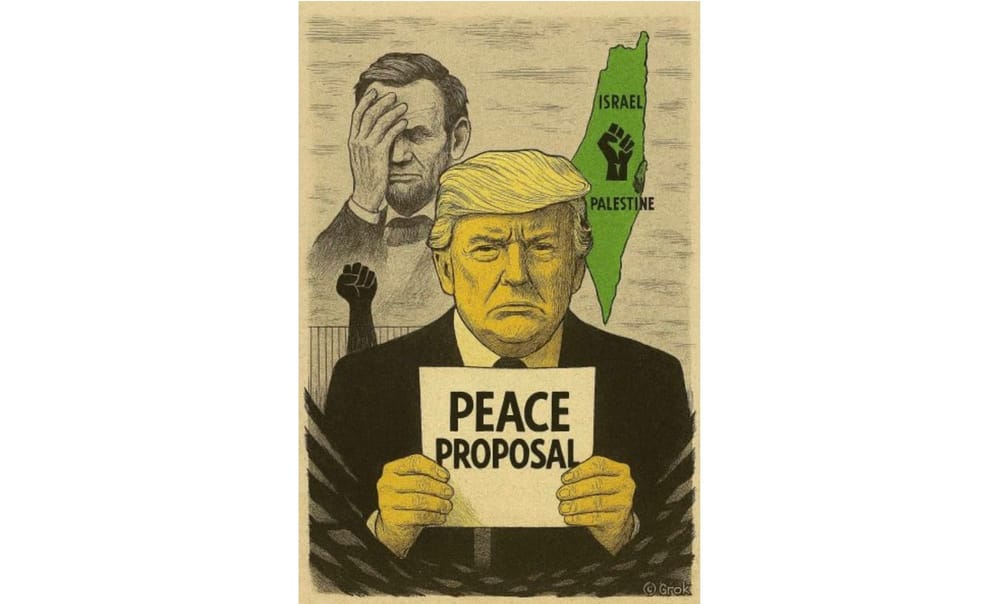
Donald Trump’s October 2025 “Peace Proposal” Perpetuates the Erasure of Palestinian History, Reinforces the Legacy of Partition and Domination
GlobalResearch.ca | Rima Najjar
This essay indicts Donald Trump’s October 2025 peace proposal for perpetuating the erasure of Palestinian history and reinforcing a legacy of partition and domination. It contrasts the plan’s framing — centered on the return of Israeli hostages and military withdrawal — with the lived reality of Palestinian dispossession, captivity, and denied return. By invoking “peace” while entrenching occupation and apartheid, the proposal distorts the Palestinian struggle and exposes the double standard through which American ideals are selectively applied. Abraham Lincoln’s vision of indivisible nationhood remains potent — but in Trump’s view of Palestine, it is hollowed, repurposed to justify partition rather than resist it. The essay invokes Lincoln’s consecrated ground — not as a site of fulfilled promise, but as a measure of betrayal — where Palestinian endurance is ritualized through recurring frameworks of containment, rendered a spectacle of managed subjugation.
Trump’s Plan Betrays Palestinian History — And America’s Claimed Ideals
On October 8, 2025, Donald Trump’s announcement of a ceasefire agreement in Gaza, framed triumphantly around the release of Israeli hostages, reverberated with a familiar, insidious erasure. In a report on Truth Social, he declared it a “very special day,” emphasizing that all remaining hostages “will be released very soon” and that Israeli forces would withdraw to an “agreed upon line.”
Trump’s selective narrative, amplified by global media, reduces a two-year genocide to a resolved hostage crisis, sidelining the profound human cost borne by Gaza’s inhabitants and perpetuating a perverse asymmetry that absolves the occupier while vilifying the occupied.
The plan’s fine print reveals an open-ended Israeli military presence inside Gaza, a detail conveniently glossed over. And while Trump celebrated the “return of our people,” he omitted the decades of Palestinian captivity under occupation: the thousands held in Israeli prisons without trial, the nameless buried in rubble, and the martyrs whose sacrifices go unrecognized in Western narratives.
Trump ignored the keys still clutched by refugees in camps from Gaza to Lebanon — symbols of homes lost in 1948, of a right of return enshrined in international law yet denied in practice. For generations, Palestinians have carried these keys not as relics, but as declarations. To invoke “return” solely for Israeli hostages while erasing the foundational Palestinian struggle for return is not just selective — it is dehumanizing. Each “peace” plan that omits them is not a resolution — it is a calculated erasure.
Before Sykes-Picot, Western powers dangled the idea of Arab self-determination as they carved up the Levant. Palestine was part of that rhetorical promise—a nation-to-be, conceived in resistance to Ottoman rule and colonial subjugation.
In erasing a century of Palestinian dispossession — from the Nakba to the present — Trump’s plan also undermines America’s professed ideals. A nation founded on the rejection of colonial tyranny now endorses a blueprint that echoes imperial partitions, offering Palestinians not liberation but managed subjugation.
This is not diplomacy; it is domination draped in the language of peace — a blueprint that deepens occupation and apartheid while masquerading as resolution. It echoes the long arc of American foreign policy, where the rhetoric of self-determination has often served as a mask for strategic control. From Wilson’s selective postwar promises to Cold War-era support for authoritarian regimes, the U.S. has invoked freedom while enabling fragmentation. Trump’s plan continues this legacy, offering Palestinians not sovereignty but surveillance, not liberation but containment. And as celebrations ring out for the return of Israeli hostages, the deeper question lingers: at what cost to the Palestinian soul — and to the credibility of a nation that once claimed to champion the right of peoples to govern themselves?
A Ledger of Martyrs
In stark contrast to Trump’s self-congratulatory, exclusionary framing of the ceasefire, the Palestinian resistance’s public agreement to the ceasefire invoked a defiant, blood-soaked truth. Hamas, in a formal statement hailing the deal, acknowledged the immense sacrifice of its people, declaring the ceasefire not as surrender but as a strategic pause forged through resilience and martyrdom.
The announcement emphasized that Gaza’s endurance had forced the occupier to negotiate, and that the resistance remained committed to liberation, return, and justice,principles rooted not in diplomatic theater, but in the lived cost of survival. And that survival, they declared, is sustained by the sacrifices of the martyrs — those whose blood consecrated the ground and whose absence fuels the will to endure.
“The agreement to stop the aggression on Gaza is an achievement for our people and their resistance, their steadfastness and bravery to confront the enemy until it was forced to accept the ceasefire… Our martyrs have forced the enemy to cease its aggression against us.”
These words echo Abraham Lincoln’s Gettysburg Address, as he mourned soldiers on a battlefield already sanctified by their blood. Hamas, invoking a similar ethos, described Gaza as the site of a “war of extermination” endured by a “steadfast people,”whose resistance forced the enemy to accept a ceasefire.
For Palestinians, consecration is not a singular event — it is an unending ritual, etched into the land of Palestine by the blood of innocents and the decades-long refusal of its people to surrender to violent expulsion and partition.
Where Lincoln mourned the fallen as having consecrated the battlefield beyond the reach of words, the Palestinian resistance affirms that sacrifice of Palestinian martyrs not as closure, but as continuity. The blood spilled does not just sanctify the past — it sustains the present. Each martyr becomes part of the soil, each demolished home a testament to endurance.
In Gaza, consecration is not a eulogy — it is a strategy of survival. The land is not merely remembered — it is reinhabited, rebuilt, and reclaimed. The resistance does not speak to honor the dead alone; it speaks to ensure that their sacrifice births the conditions for Palestinian life to continue.
Where Lincoln consecrated sacrifice with indivisible nationood, Trump replays the architecture of failed peace — turning Gaza’s survival into a ritual of entrenching Palestine’s partition.
The Ground Is Not Hallowed by Speeches, But by Survival
In his Gettysburg Address, Abraham Lincoln reflected on a nation torn by civil war, standing amid the graves of the fallen to honor their sacrifice. He declared:
“We cannot dedicate—we cannot consecrate—we cannot hallow—this ground. The brave men, living and dead, who struggled here, have consecrated it, far above our poor power to add or detract.”
Lincoln’s words were a humble acknowledgment: no oratory, no ceremony, could sanctify the earth more profoundly than the blood spilled upon it. The Union soldiers at Gettysburg had died in a conflict aimed at preserving a fragile union and, ultimately, expanding the fragile promise of liberty to all. Their deaths transformed a Pennsylvania field into hallowed ground, not through presidential decree, but through the raw, irreversible act of sacrifice. It was a moment of retrospection, looking back on a battle already etched into history, where the dead could rest as symbols of a greater cause.
Yet in Gaza, this consecration unfolds not in the past tense of memory, but in the unrelenting present of annihilation. The parallel to Lincoln is no mere literary device; it is a stark indictment of a world that witnesses genocide and averts its gaze. Gaza’s soil is sanctified by the blood of tens of thousands—men, women, and children who have perished not in symmetrical combat, but under a siege that spares no one. These are not just soldiers falling in battle; they are families obliterated in their homes, patients crushed in hospital wards, and children vaporized while seeking shelter. The ground absorbs missiles, shrapnel, and the remnants of lives interrupted mid-breath.
Where Lincoln mourned a battlefield of equals, Gaza reveals a landscape of asymmetry: one side armed with precision airstrikes and blockades, the other with resilience born of desperation.
Hamas’s statements on the conflict do not glorify resistance as some abstract ideal; they chronicle its brutal cost—a ledger of loss etched in blood, displacement, and unyielding survival. Unlike Lincoln’s elegy for a concluded battle, the Palestinian narrative emerges from an ongoing slaughter, where survival itself becomes an act of defiance. The dead are not neatly eulogized in marble monuments; they are interred in makeshift mass graves, their bodies often unidentified, reduced to fragments amid the rubble.
Consider the corridors of Al-Shifa Hospital, once a beacon of healing, now a charnel house. In April 2024, after Israeli forces withdrew, Palestinian civil defense teams unearthed over 300 bodies from mass graves on the hospital grounds, many bound, stripped, or showing signs of execution-style killings.
By September 2025, renewed Israeli assaults on Gaza City created fresh mass graves at hospitals, as airstrikes and ground advances forced the hasty burial of victims amid chaos. These sites are not relics of history; they are active wounds, where the living dig through debris to reclaim their loved ones, only to find horror.
The human stories embedded in this tragedy amplify the emotional weight of such desecration. Take Umm Mohammed Qanita, a mother from Khan Younis, who fled the Nasser Hospital courtyard in December 2023 after her 17-year-old son, Mohammed, was shot and killed while trying to buy supplies. In the frantic escape, she buried him hastily between a palm tree and an olive tree in the hospital grounds. Months later, returning to a landscape scarred by bulldozers and exhumations, she clawed at the sand with her bare hands, weeping:
“The palm tree was over here, and they went and ripped it out. My beloved Mohammad, where have you gone, my dear? I’ve come for you.”
In her grief, she buried an empty shroud—a symbolic farewell to a body stolen by the war’s machinery. Stories like hers are not anomalies; they are the fabric of Palestinian endurance, where mothers become archaeologists of loss, sifting through ruins for closure that may never come.
The scale of this consecration defies comprehension. As of early October 2025, Gaza’s Health Ministry reports that Israeli forces have killed at least 67,075 Palestinians since October 7, 2023, with 169,430 wounded—a total of over 236,000 direct casualties, equating to more than 10% of Gaza’s pre-war population of approximately 2.2 million.
These numbers, verified through United Nations tracking and public health analyses, represent only the documented toll; experts estimate thousands more lie unrecovered under rubble, with indirect deaths from starvation, disease, and collapsed infrastructure potentially doubling or tripling the count.
Roughly 3% dead, 8% maimed—this is not a battlefield hallowed by heroic stands, but a population systematically eroded, where survival is the ultimate sanctification.
To invoke Lincoln in Gaza is to demand recognition: the ground is already hallowed, not by words, but by the unyielding will to endure. Yet the world’s refusal to act—through vetoes, arms shipments, and silence—perpetuates the desecration. Speeches may echo in halls of power, but they do not halt the missiles or unearth the buried.
True consecration lies in the hands of the survivors, who rise from the ashes not for glory, but for the simple, profound act of living on. In their resilience, Gaza’s soil pulses with a sanctity that no occupation can erase.
The Asymmetry of Grief
The announcement from President Trump casts a stark light on the skewed scales of mourning in the Israel-Palestine conflict, revealing an asymmetry that distorts not just perception, but justice itself.
The focus falls heavily on Israeli hostages — individuals like Noa Argamani, whose tear-streaked face became a global symbol of anguish, or Hersh Goldberg-Polin, whose story fueled impassioned campaigns across social media and news outlets.
Their suffering, raw and real, is distilled into a handful of names, faces, and stories, each carefully framed to evoke immediate, visceral empathy. These are tragedies that fit neatly into posters, vigils, and headlines — grief made legible, urgent, and human.
Yet the grief of Gaza defies such tidy framing. How does one encapsulate the scale of loss when the numbers alone stagger the mind? Since October 7, 2023, over 20,000 children have been killed in Gaza — one life extinguished every hour for nearly two years. These are not faceless statistics, but singular souls like five-year-old Lama Abu Haya, who died in Rafah’s rubble clutching her doll, her small body found days later by neighbors sifting through debris.
Or 12-year-old Rami Al-Halhouli, shot by an Israeli sniper in a designated “safe zone” in Khan Younis, his dreams of becoming a doctor snuffed out as his family watched, helpless. No viral campaigns immortalize their names; no global vigils light candles for their futures stolen. Their deaths are folded into a collective toll, too vast for any single collage to hold.
This asymmetry extends beyond the visible dead to the invisible captives. While the plight of Israeli hostages commands international attention, over 11,000 Palestinians languish in Israeli prisons, including approximately 3,380 held under administrative detention — imprisoned without charges, trials, or end in sight. Among them are children as young as 12, stripped of family contact, and elders like 82-year-old Mustafa al-Hajj, detained for the crime of writing a poem deemed subversive.
UN experts and organizations like Amnesty International have documented systemic abuses in these facilities: beatings, sexual violence, starvation diets, and medical neglect amounting to torture.
Yet these prisoners remain shadows in the global narrative, their suffering obscured by a discourse that amplifies one side’s pain while silencing the other. Trump’s rhetoric, with its selective spotlight, performs a kind of narrative surgery — excising Palestinian grief to sanitize the aggressor’s role.
By centering only the visible victims of one side, it erases the broader context of occupation, blockade, and systemic violence that fuels this asymmetry. The Israeli hostages are humanized, their stories amplified by media and political machinery; the Palestinian dead and detained are reduced to numbers, if acknowledged at all.
This imbalance is not accidental — it is a deliberate act of erasure, one that absolves the powerful by rendering the powerless invisible. To confront this asymmetry is to demand a reckoning with grief in its fullness. It is to insist that Lama’s doll, Rami’s dreams, and Mustafa’s poem carry the same weight as any hostage’s face on a poster. It is to recognize that mourning cannot be selective without becoming complicity.
The ground of Gaza, soaked with uncounted tears, calls for a justice that sees every loss, names every name, and refuses to let silence bury the truth.
A Neo-Colonial Carve-Up
Abraham Lincoln, standing on the blood-soaked fields of Gettysburg, spoke of a nation “conceived in Liberty, and dedicated to the proposition that all men are created equal.” His words, delivered amid a brutal civil war, were a clarion call for a “new birth of freedom” — a vision to preserve a union where “government of the people, by the people, for the people, shall not perish from the earth.” Lincoln’s hope was rooted in the belief that self-determination, grounded in equality, could heal a fractured nation and redeem its founding ideals. His address was not just a eulogy for the fallen but a challenge to the living: to ensure their sacrifices birthed a more just future.
Contrast this with the so-called “peace” proposed by President Trump in 2025, a plan that inverts Lincoln’s vision, entrenching division over unity and subjugation over liberty. Far from fostering self-determination, Trump’s twenty-one-point plan — building on his 2020 “Peace to Prosperity”vision — reimagines Palestine not as a sovereign whole but as a fragmented patchwork, carved up to serve the occupier’s interests.
This is no new birth of freedom; it is a calculated resurrection of colonial logic, slicing apart Palestinian land and aspirations with the precision of an imperial scalpel. The plan endorses Israeli annexation of the Jordan Valley and illegal settlements, reducing any future Palestinian entity to disconnected enclaves, linked by tunnels and overpasses — corridors of control masquerading as connectivity.
This vision echoes the historical dismemberment of Palestine, a land once cohesive under Ottoman rule, then fractured by British Mandate policies and the 1947 UN Partition Plan. That plan, imposed without Palestinian consent, triggered the Nakba, displacing over 700,000 people — half the population — whose descendants now number over 5.9 million refugees, still denied their right of return.
Trump’s proposal does not heal this wound; it deepens it, institutionalizing fragmentation under the guise of peace. It demands an open-ended Israeli “security perimeter presence” in Gaza, stripping Palestinians of sovereignty over their own borders. It excludes Hamas from governance, dismissing a significant portion of Palestinian political will, while tying any “pathway to Palestinian self-determination” to Palestinian Authority reforms and international oversight.
This pathway is a mirage, conditional on compliance with external benchmarks: institution-building, donor approval, and the suppression of resistance to fit the occupier’s definition of “de-radicalized.” Gaza, in this scheme, is reduced to a quarantined “terror-free zone,” its people’s agency erased in favor of a sanitized, submissive entity.
This is not a road to freedom but a detour around it, echoing the failed Quartet’s Road Map of the early 2000s, which similarly yoked Palestinian aspirations to externally dictated milestones. That framework, too, promised self-determination while chaining it to conditions that ensured Israeli dominance. Trump’s plan shrinks this road further into a narrow corridor of control, where Palestinian statehood is a privilege granted only if it aligns with the occupier’s vision, not the will of the occupied. It is a blueprint for subjugation, dressed in the language of diplomacy.
The emotional weight of this betrayal cuts deep. For Palestinians, this is not just a policy proposal; it is a continuation of a century-long dispossession, from the Balfour Declaration to the Oslo Accords, each promising liberation while delivering new forms of enclosure.
Imagine a family in Gaza, like that of Amina al-Hassouni, who lost her home in Beit Lahia to airstrikes in 2024, forced to live in a tent camp with her four children, their futures tethered to the whims of international donors and Israeli checkpoints.
Or consider the youth in the West Bank, like 16-year-old Khaled, arrested for throwing stones, now facing indefinite detention in a system that criminalizes resistance while offering no justice.
Their dreams of a free Palestine are not abstract; they are rooted in the soil their ancestors tilled, now carved up by walls, settlements, and foreign decrees.
This neo-colonial carve-up betrays not only Palestinian hopes but the very ideals Lincoln invoked. Where he saw a nation striving toward equality, Trump’s plan entrenches hierarchy, offering Palestinians not a state but a series of cages.
It is a vision that mocks the notion of “government of the people,” replacing it with governance by external fiat.
To call this peace is to desecrate the word itself — it is a partition not just of land, but of dignity, agency, and hope.
True freedom, as Lincoln knew, cannot be granted by the powerful; it must be claimed by the people.
For Palestinians, that claim persists, unbroken, in the face of every map redrawn to erase them.
Groundhog Day in the Lincoln Office
The cycle of failed “peace” initiatives in Palestine unfolds like a tragic loop, each iteration promising resolution while delivering deeper entrenchment of division.
This pattern traces its origins to the 1917 Balfour Declaration, a British pledge that viewed Palestine not as a sovereign homeland for its indigenous people, but as a geopolitical puzzle to be solved — favoring a “national home for the Jewish people” while vaguely nodding to the rights of existing communities.
Three decades later, the 1947 UN Partition Plan formalized this dissection, allocating 56% of the land to a Jewish state despite Palestinians comprising two-thirds of the population and owning most of the territory.
What followed was the Nakba of 1948, a catastrophe that uprooted over 700,000 Palestinians, razing villages and scattering families into exile, their keys to abandoned homes becoming symbols of a loss that echoes through generations.
From there, the script repeated with weary predictability: the Camp David Accords of 1978, which sidelined Palestinian self-determination in favor of Egyptian-Israeli peace; the Oslo Accords of 1993, which fragmented the West Bank into isolated zones of control, creating a labyrinth of checkpoints and barriers that strangled movement and economy; and Trump’s own 2020 “Deal of the Century,” which legitimized Israeli settlements and offered Palestinians a state in name only — scattered islands amid annexed seas.
Each plan framed Palestinian sovereignty not as an inherent right, but as a revocable concession, dangled like a carrot before a people starved of justice. These were not steps toward freedom but mechanisms of management, where autonomy was conditioned on quiescence, and resistance was pathologized as the barrier to progress.
Now, in 2025, Trump’s twenty-one-point plan reprises this tired drama, cloaking coercion in diplomatic veneer and containment in the rhetoric of resolution. It ignores the glaring lesson etched across a century of history: as philosopher George Santayana warned, “Those who cannot remember the past are condemned to repeat it.”
In Palestine, this repetition is not a mere rhetorical flourish — it is a ruinous reality, where each recycled blueprint redraws borders with the same colonial ink, effacing Palestinian agency, rewriting narratives of resistance as terrorism, and reinscribing layers of injustice upon a landscape already scarred by dispossession.
Trump’s proposal, with its enclaves connected by tunnels, its indefinite Israeli security oversight, and its demands for “de-radicalization,” is no innovation; it is a ritual reenactment, as if the architects of empire are trapped in their own Groundhog Day, awakening each dawn to the same flawed assumptions, only to impose them anew.
The irony deepens when considering the setting: Trump crafts this vision from the storied office where Abraham Lincoln once toiled to mend a divided America. Lincoln, penning the Emancipation Proclamation in 1863, transformed that space into a forge for liberation, proclaiming freedom for millions enslaved and later envisioning a “new birth of freedom” at Gettysburg.
His legacy was one of unification, binding wounds to ensure equality’s promise endured. Yet here, in the same hallowed halls, Trump drafts maps of perpetual fragmentation — enclaves for the subjugated, tunnels for the contained, and sovereignty granted only on probation.
It is a profound betrayal, not merely of Palestine’s unyielding quest for dignity, but of America’s own aspirational heritage. The office that consecrated emancipation now authors edicts of enclosure, proving that historical amnesia is not a passive oversight but a deliberate policy, wielded to sustain dominance.
The human cost of this endless loop is visceral, felt in lives like that of Fatima Khalil, a 70-year-old refugee from the village of Lifta, depopulated in 1948. Displaced to a camp in Gaza, she has witnessed every “peace” plan’s hollow promise, burying children lost to sieges and watching grandchildren inherit the same limbo of waiting — for return, for rights, for recognition.
“We are not problems to be solved,” Khalil told reporters in 2024, her voice cracking with decades of deferred hope, “we are people with roots deeper than any wall.” Stories like hers underscore the emotional devastation: each repetition erodes not just land, but the spirit, turning hope into a relic and survival into an act of quiet rebellion.
Trump’s plan is no departure from this cycle — it is its latest scene, scripted in the language of peace but rooted in domination. To break free requires not another map, but a reckoning: acknowledging that true resolution demands justice, not partition; equality, not conditions. Until then, the groundhog’s shadow lengthens, casting Palestine into eternal winter, while the world watches the same day dawn again and again.
Original Article: https://www.globalresearch.ca/palestine-repetition-betrayal/5902541

TRUMP STOCKHOLM SYNDROME
The Abusers Stop Abusing
Richard Willett | substack.com/@richardwillett
Sometimes you wonder, what is the fucking point hey!…
The cognitive dissonance of some people makes you want to shout TITS! out bedroom window to a random passer by. But they might be construed as hate speech crime in today’s batshit crazy world.
All you need to do is a fund at genocide it seems, and the world will bend over backwards, slap you on the arse and give you a Nobel Peace Prize. As ridiculous as this all sounds, this is the inverted world we now live in, and it’s become deeply Satanic.
And it’s real, oh so very real!
Yesterday the X/Twitter world lost its hive mind because Hamas have agreed to let the hostage go home, which is of course wonderful. Those who were taken and abused on October 7th by Hamas are simply pawns in this game of illusion. What those crowing about Trump’s and Jared Kushner’s “brilliance” in securing the deal won’t tell paints a much darker truth that can only stay hidden for so long. Eventually the cult will have to prove us right.
First off Hamas was openly propped up by Netanyahu for years. Chabad owned Netanyahu allowed Hamas to receive cash from Qatar by permitting entry of Gazan laborers into Israel as well as negotiating indirectly with Hamas. Some of you might be shocked by this, but this is how they always do it. David Icke coined the phrase “problem, reaction, solution” which is another way of describing an alchemical chain reaction that changes the world with the outcome.
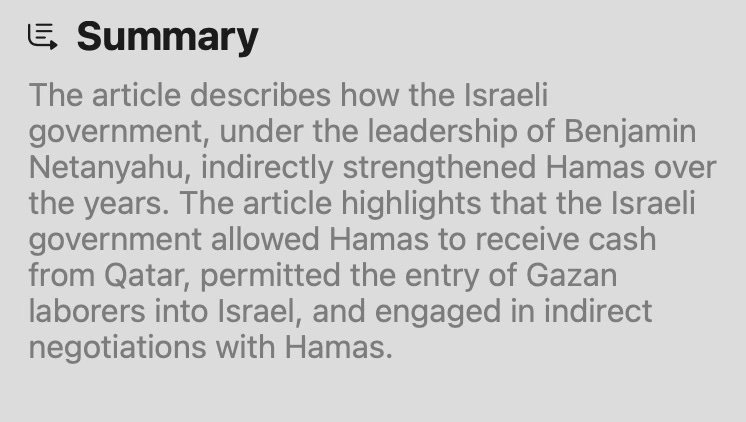
Netanyahu (Mileikowsky) who is of Polish decent and has no connection to the Israelites of the biblical text in anyway, even told the world this in 2019. It was always about stopping the establishment of a Palestinian State. I do not think it is too much of a stretch to suggest that at the very top of the Hamas control system they are a proxy army for the Zionist cult that runs Israel, likely for the Crown Corporation. Zionism is not the top of the death cult pyramid, not by a long shot. It functions as a political party for the cult in a proxy installation that is called modern day Israel. The idea was always to expand that holding after the Balfour Declaration of 1917.
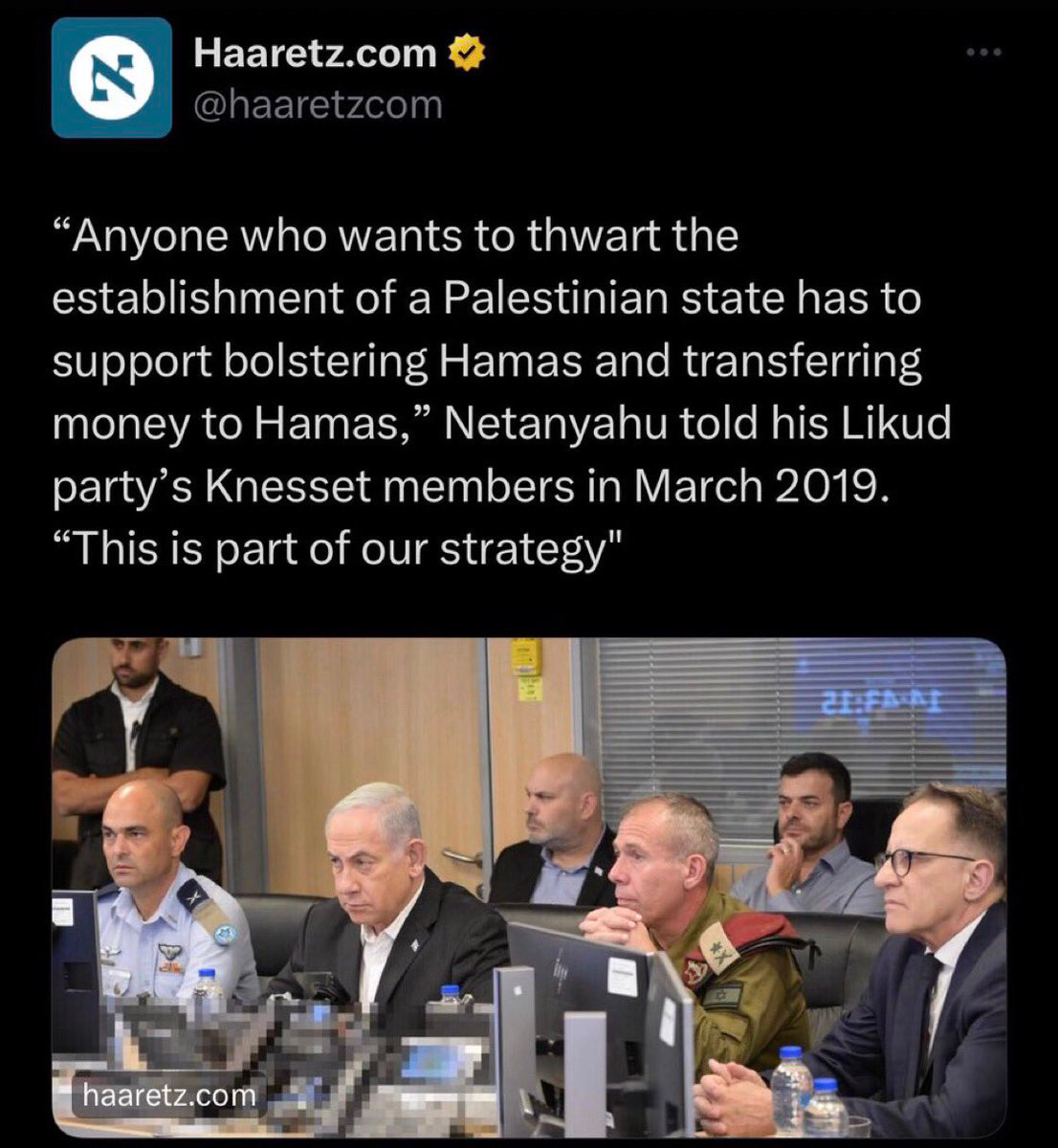
This is all about The Greater Israel project, which in reality is the political front of a Messianic agenda for what the Chabad Lubavitch sect call ‘Olam Haba’. This is their world to come or New World Order. Both Donald Trump and Netanyahu are followers of Chabad Lubavitch as is Jared Kushner and Trump’s daughter Ivanka Trump. Below you will see both Elon Musk and Kushner in Qatar with the chaps from the Sovereign Wealth Fund who invested in Musk and X.
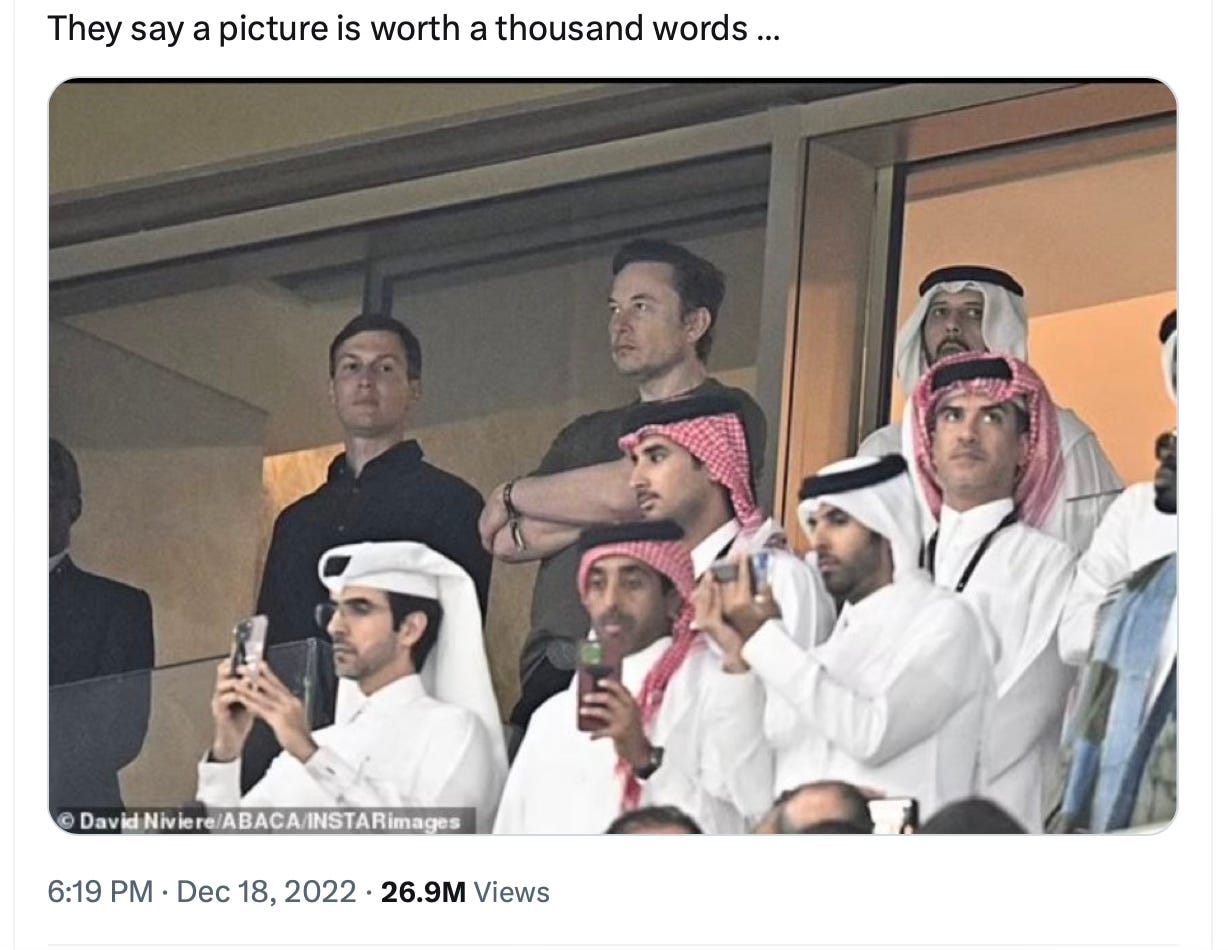
The sad fact is, those who clearly had a cognitive melt down and compartmentalised Trumps true behaviour are celebrating the man who helped to fund this:
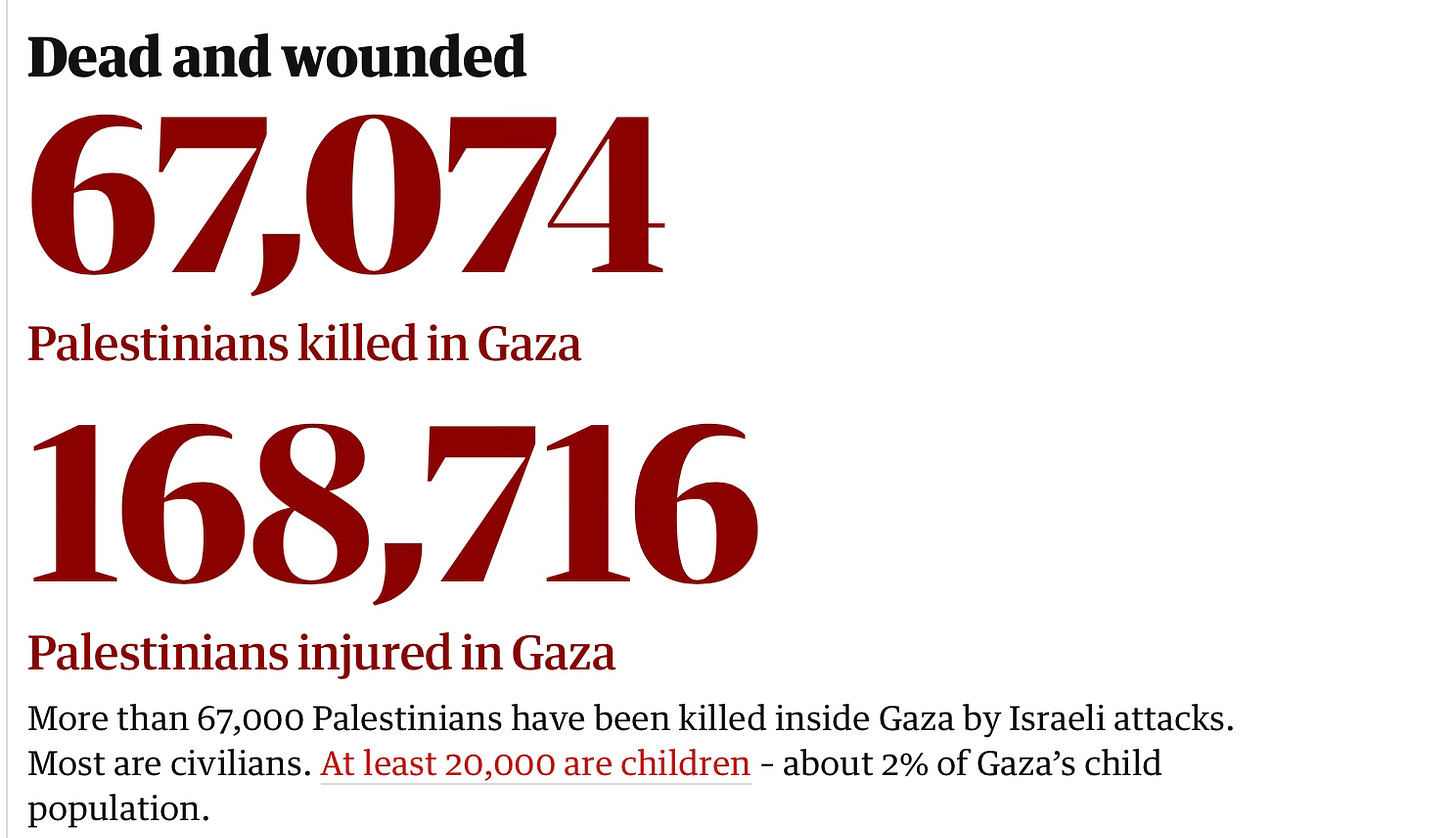
Let that sink in!
67,000 Palestinians dead
168,000 Palestinians injured
20,000 Palestinian children dead (2% of the child population of Gaza)
In what sort of inverted Satanic world does someone who is responsible for this get a Nobel Peace Prize? Earth apparently.
The fact is this is all part of lunatic plan to play out End Times Prophecies, which link in with the teachings of the Lurianic Kabbalah. You have been applauding a gaggle of dark occultists who have no place for you in their World To Come.
This is NOT a Jewish plot, these dark occultists work through all avenues of the world. They work through the Catholic Church via the Jesuits, Trump and Erika Kirk are both Jesuit educated and connected to the knights of Malta. They work through Islamic extremists, Buddhism, Hinduism, Big Tech, Big Pharma, Local Governments, Freemasonry, Sabbatean Frankism, Banking, City of London, The Vatican, Washington DC (Rome Maryland). They function through all avenues of society and hide behind anything they can use, including fake business’ and the guise of being a “Philanthropist”, which is always laughable and red flag.
Original Article: https://richardwillett.substack.com/p/trump-stockholm-syndrome
Related:
“They make a desert and call it peace.” - Tacituspic.twitter.com/HwIzALM1f4
— Patrick Corrigan (@PatrickCorrigan) October 9, 2025
BREAKING: TRUMP CAN’T GUARANTEE ISRAEL WON’T BOMB GAZA AFTER THEY GET THEIR PRISONERS BACK
— ADAM (@AdameMedia) October 9, 2025
This is a set up. pic.twitter.com/Gmjf2uzcup

Comments ()